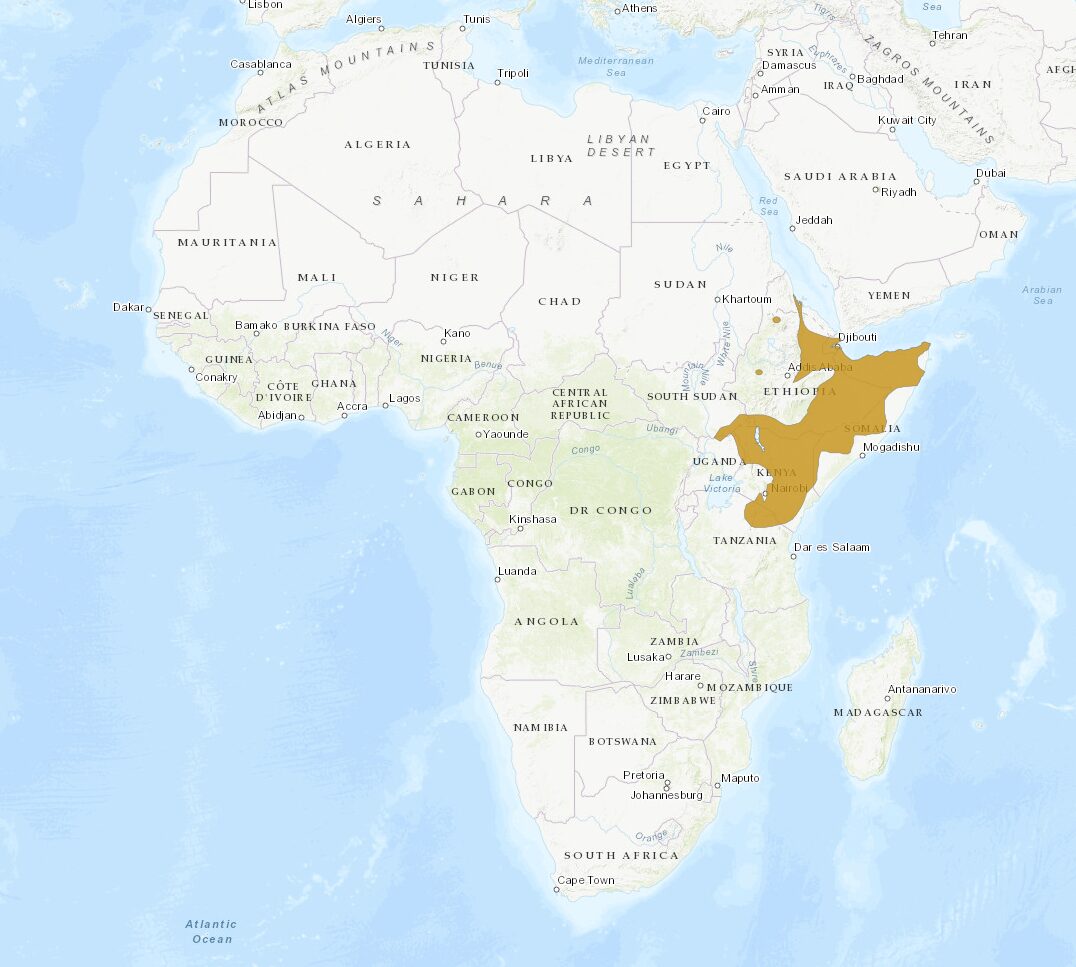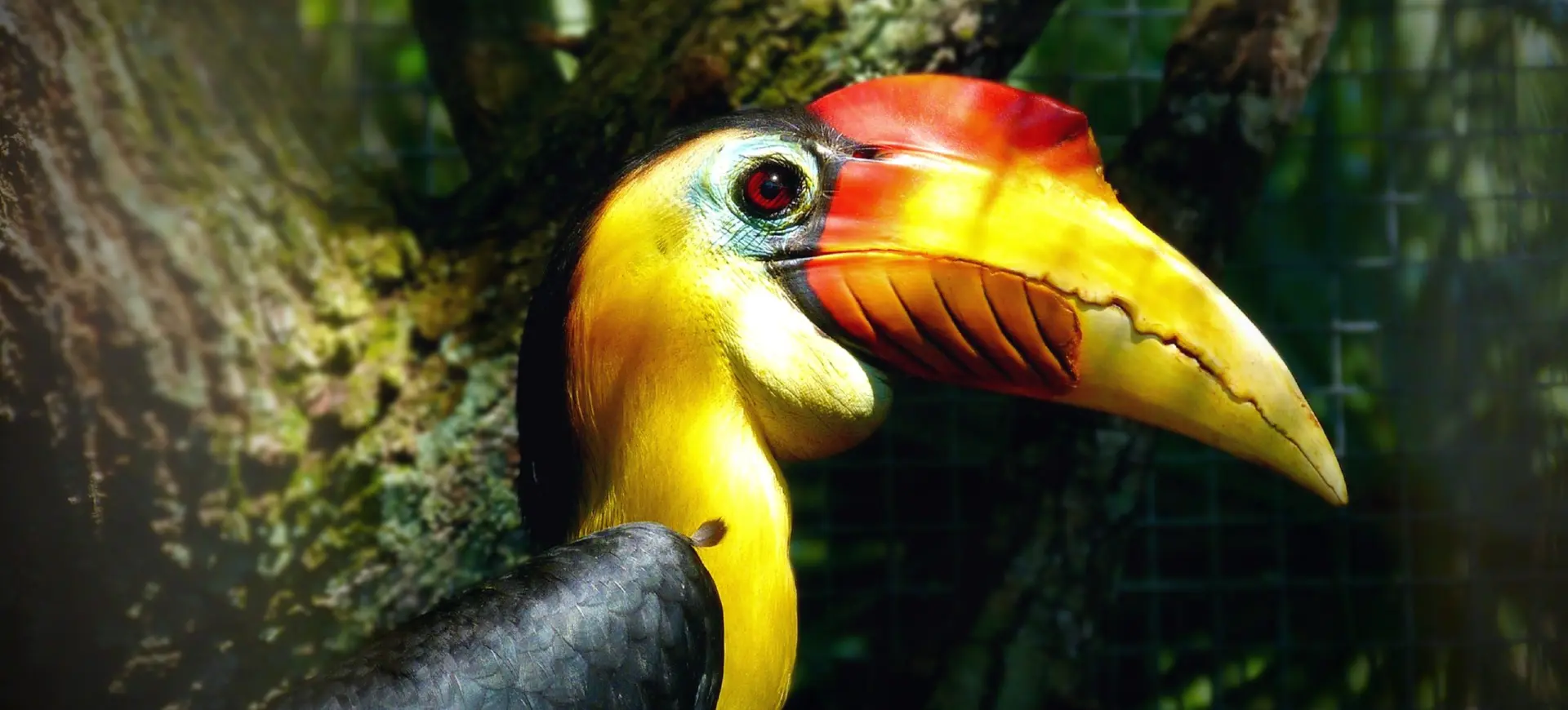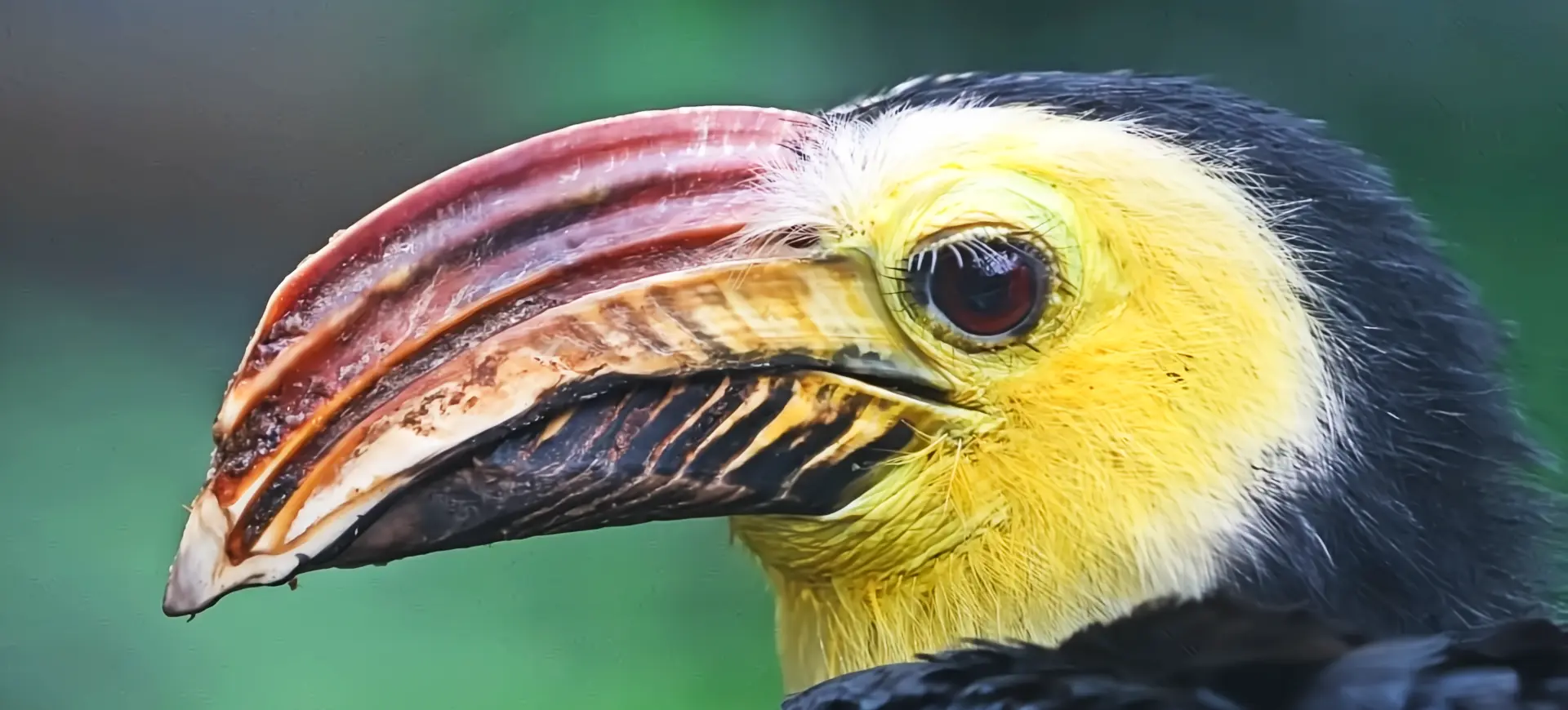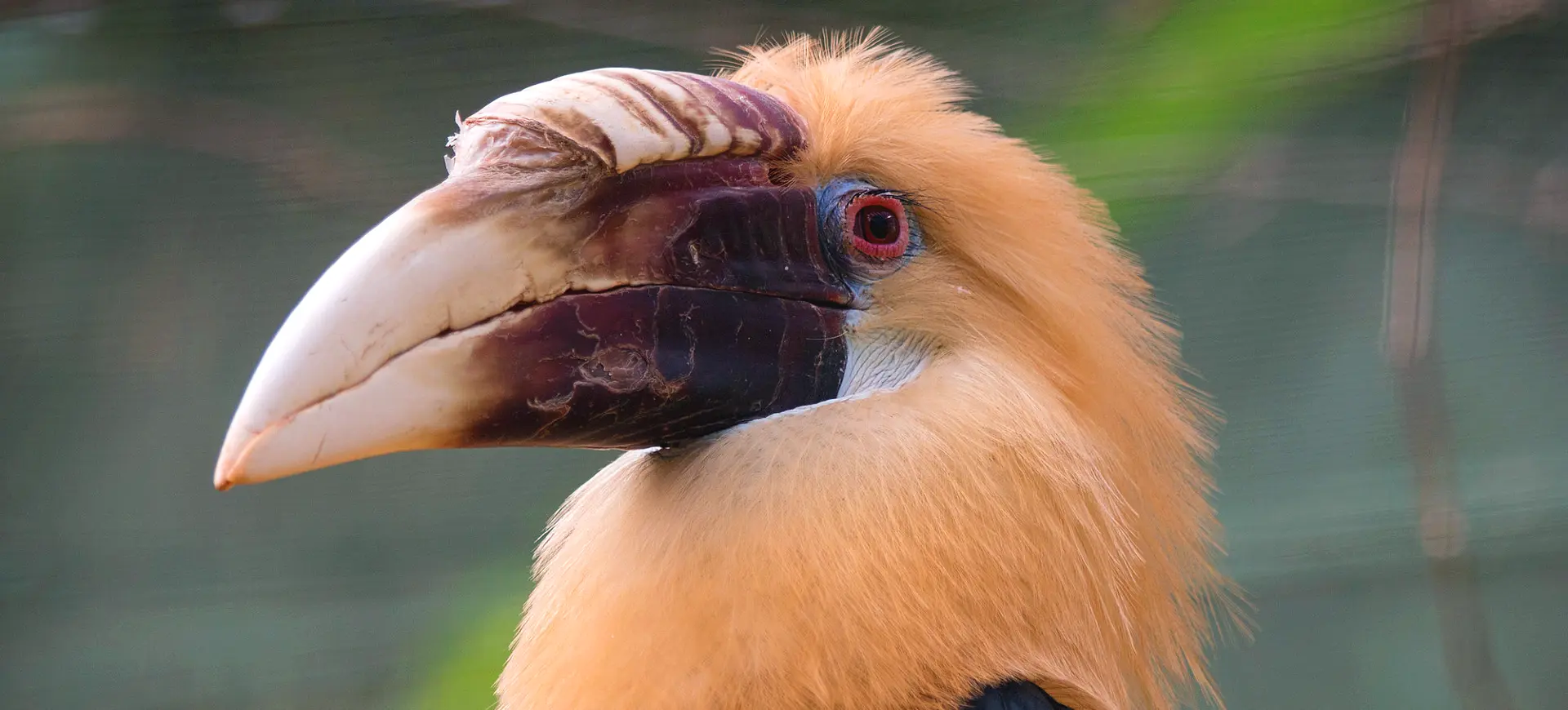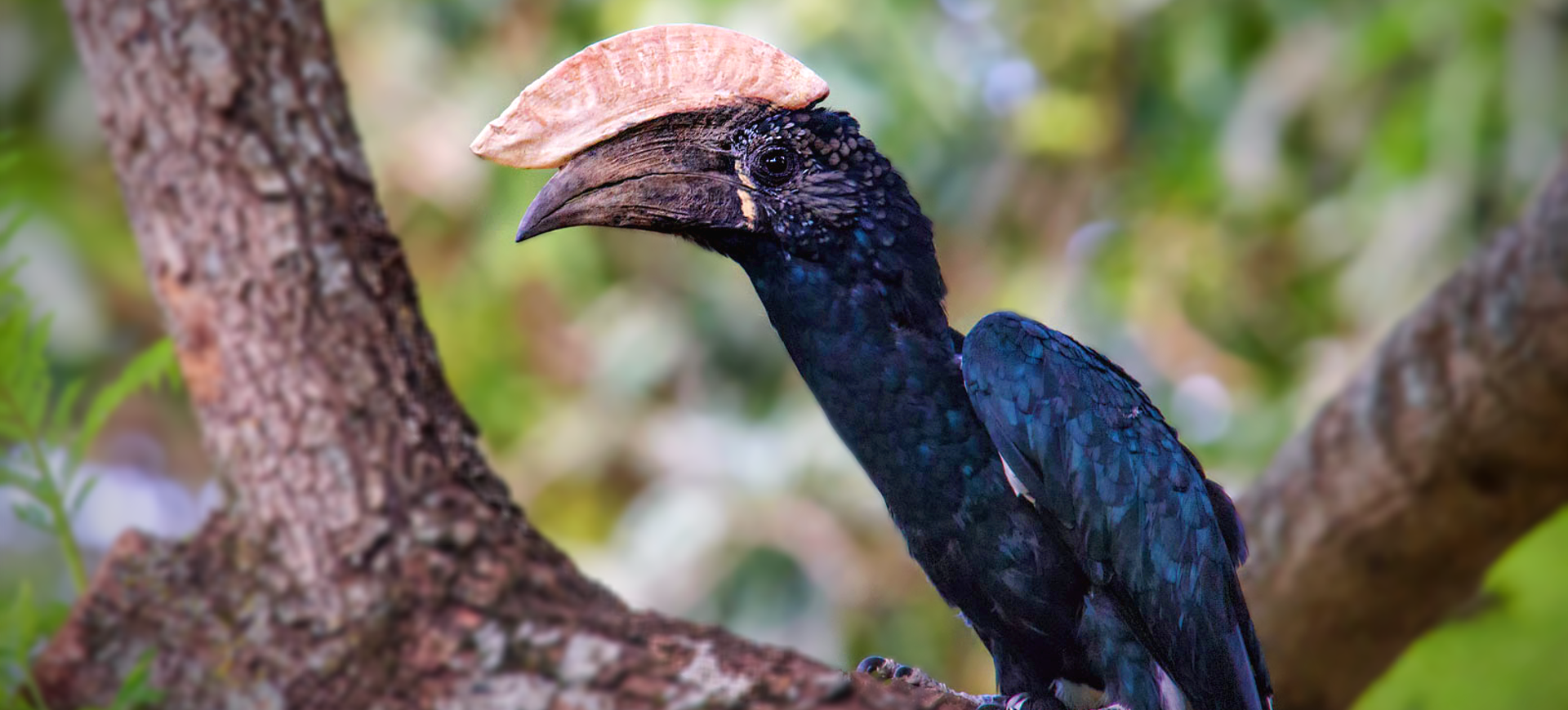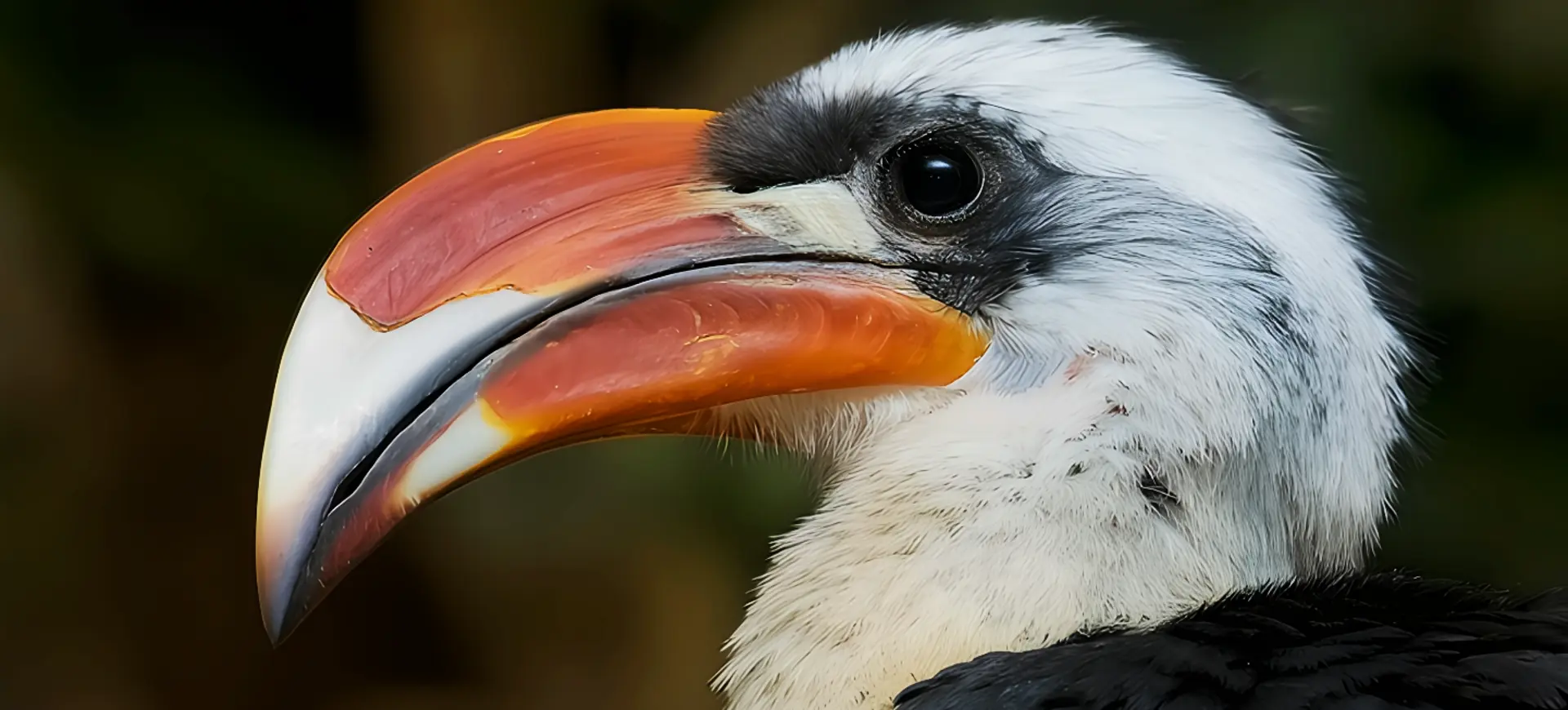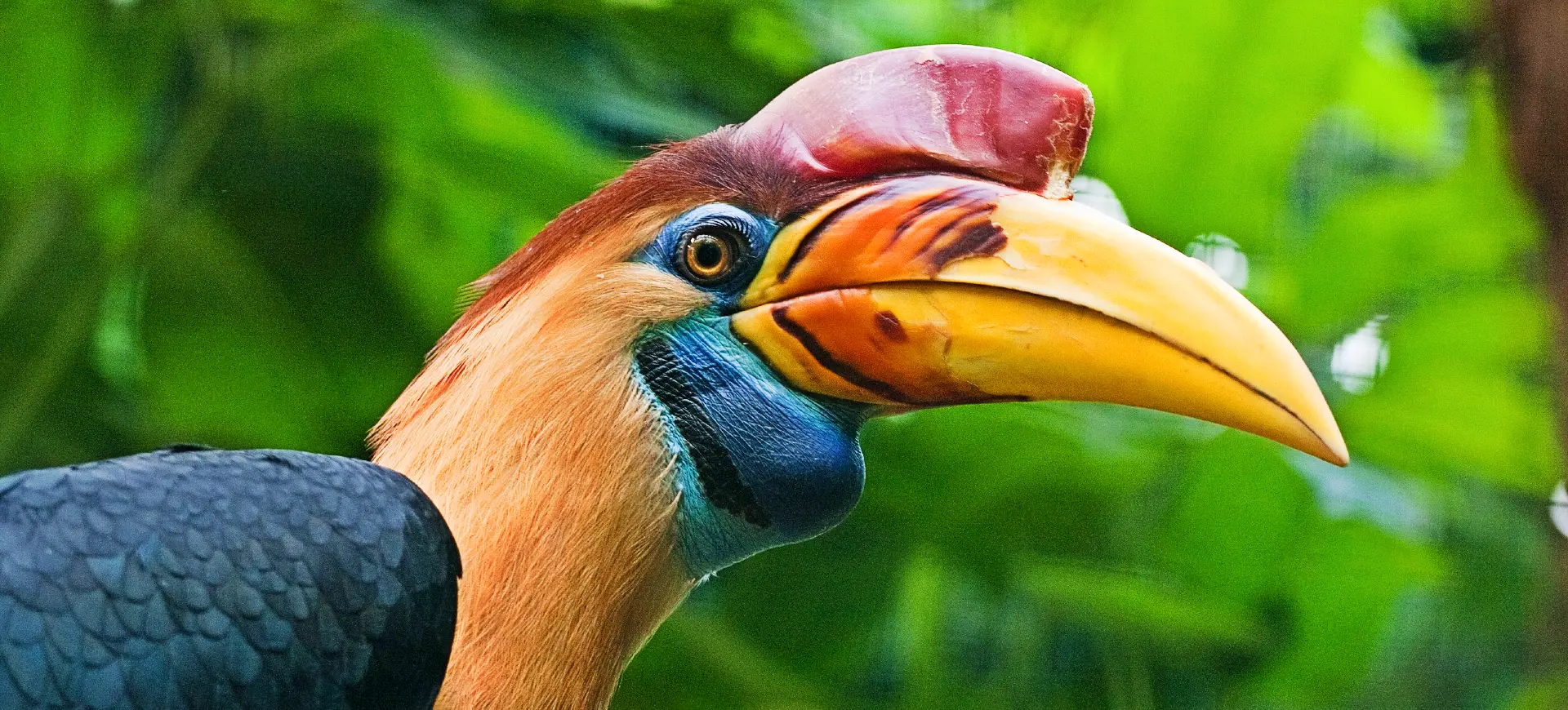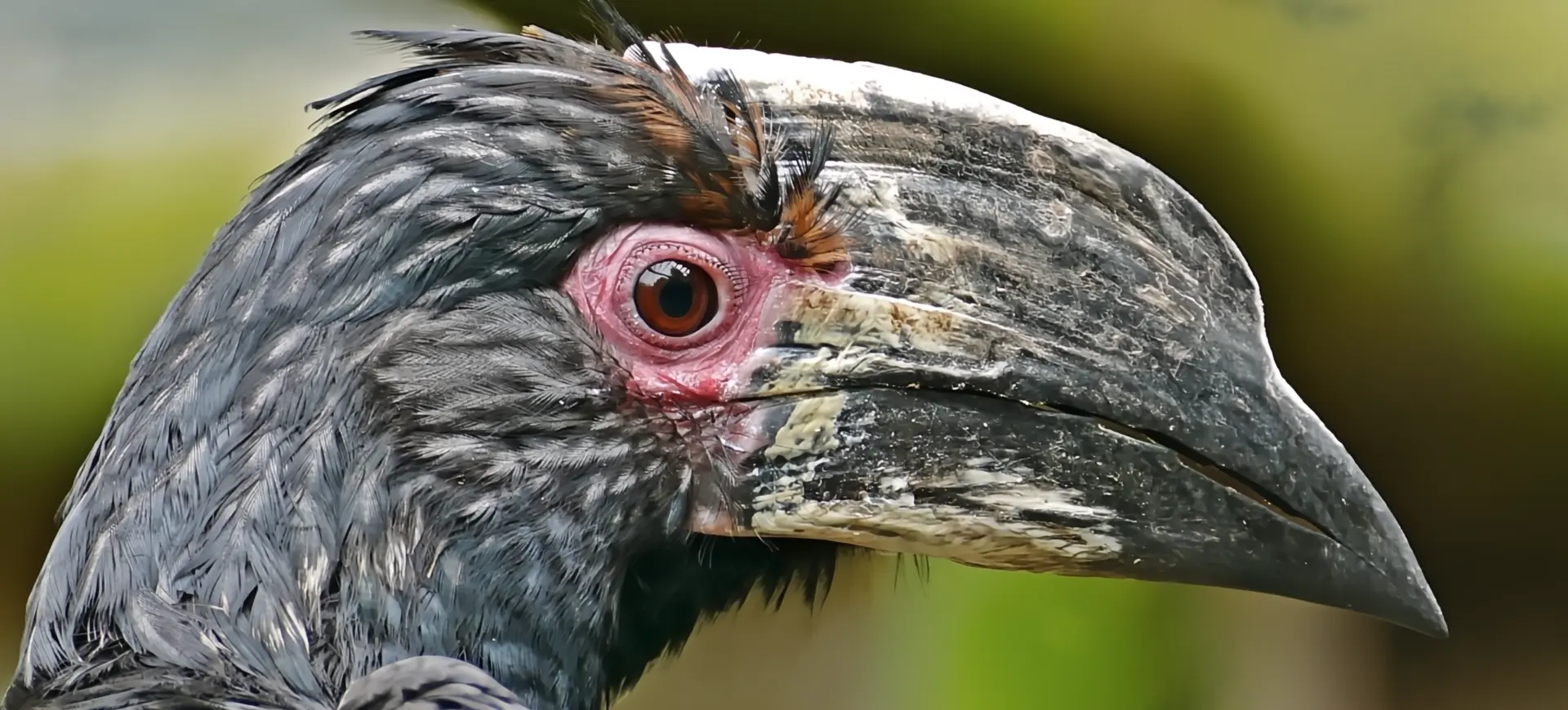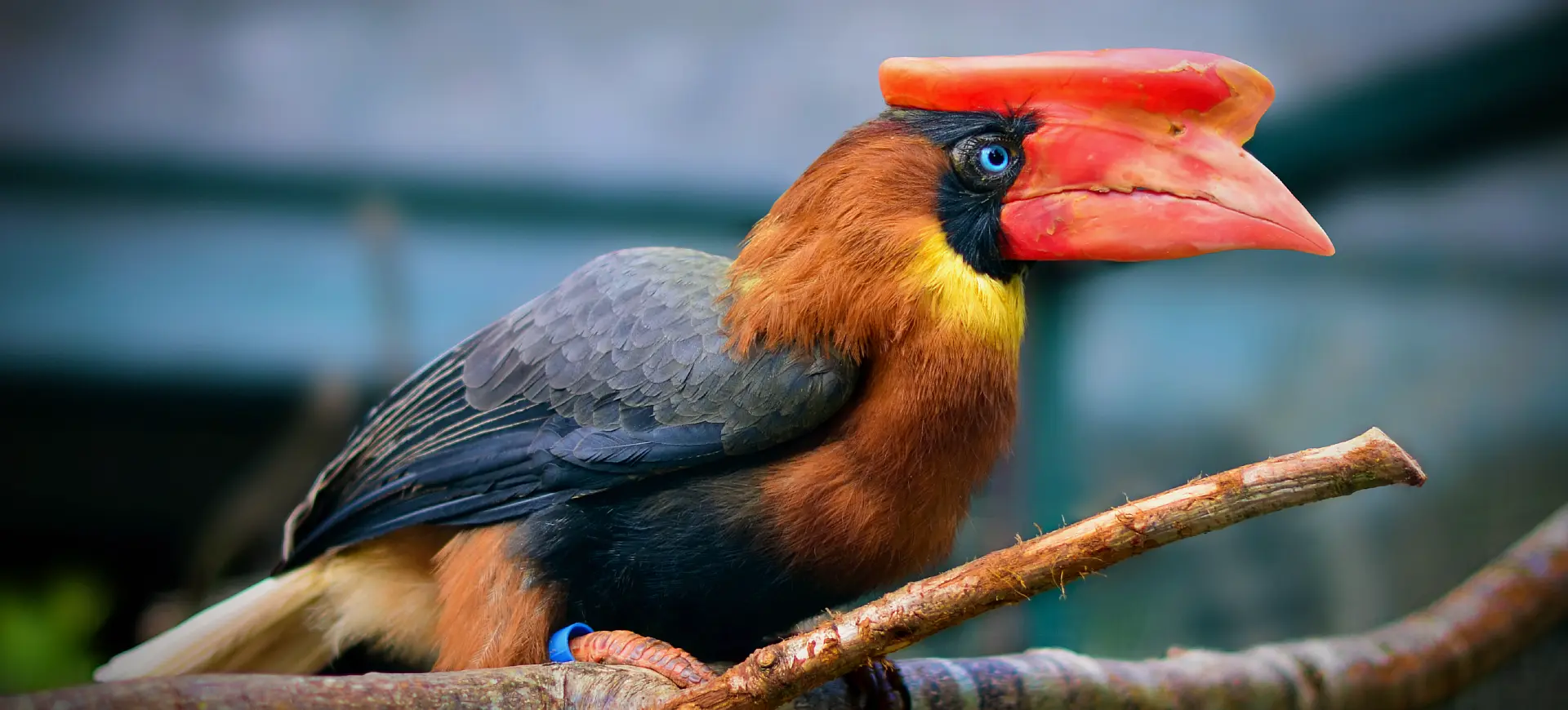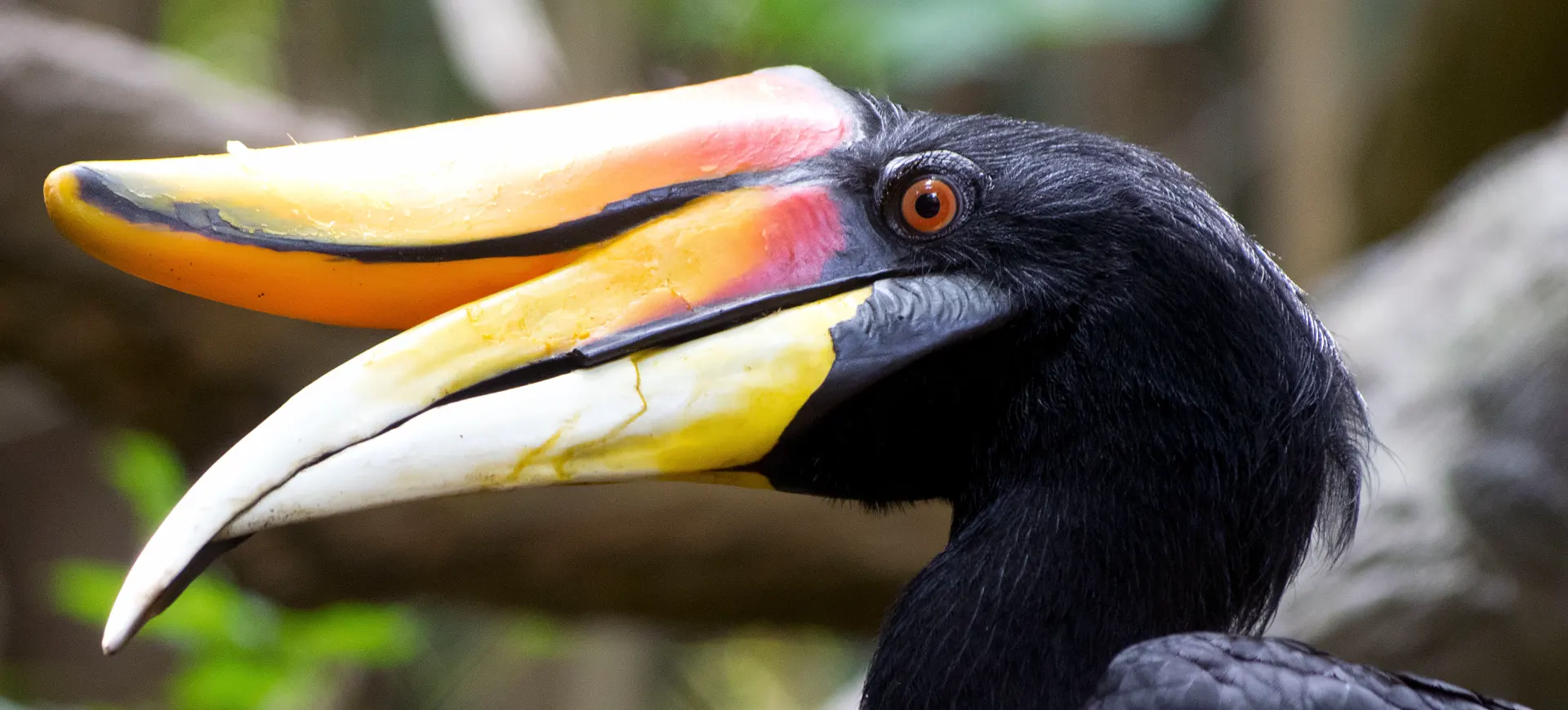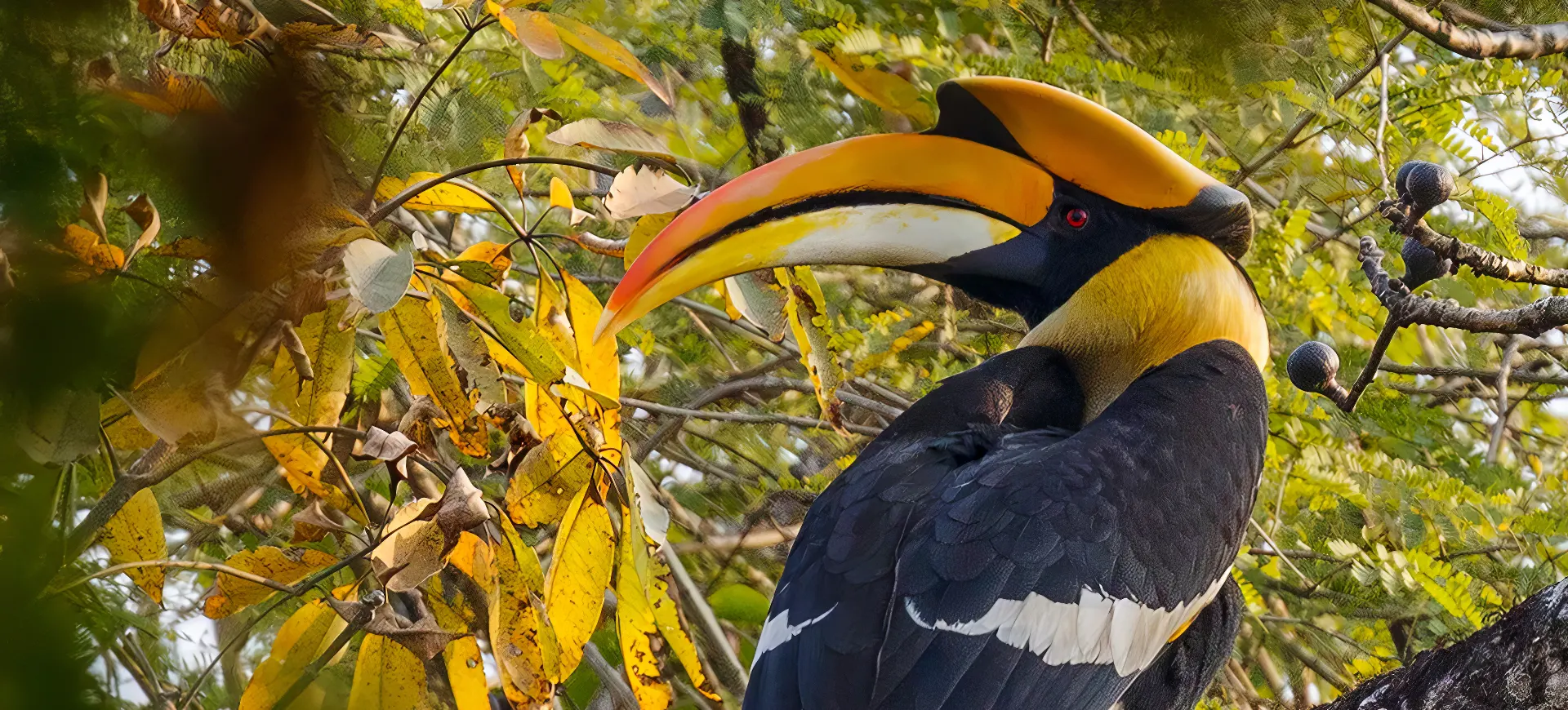Overview
The Eastern Yellow-billed Hornbill, known scientifically as Tockus flavirostris, is a distinctive bird species native to the arid and semi-arid savannas of East Africa. This bird is easily recognizable by its long, down-curved, yellow bill and striking black and white plumage. Males typically have a larger bill than females, a feature that is particularly useful in their foraging habits. Eastern Yellow-billed Hornbills are primarily ground feeders, although they forage in trees, searching for insects, seeds, and fruits.
These birds are known for their unique nesting behavior, where the female seals herself inside a tree cavity with mud, dung, and fruit pulp, leaving only a small slit through which the male feeds her and, eventually, the chicks. This remarkable strategy is thought to protect the nest from predators. The Eastern Yellow-billed Hornbill’s call, a series of piping notes followed by a loud cackle, is a familiar sound in their habitat, contributing to the auditory landscape of the African savanna.
Socially, these hornbills are often observed in pairs or small family groups and are territorial during the breeding season. They are an integral part of the ecosystem, contributing to seed dispersal and controlling insect populations. Despite facing threats from habitat destruction and degradation, the Eastern Yellow-billed Hornbill remains relatively common in suitable habitats, indicating successful adaptation to their environment.
Taxonomy
Kingdom
Phylum
Class
Order
Family
Genus
Species
Type
Current distribution:
The Eastern Yellow-billed Hornbill is widely distributed across East Africa, with a range encompassing several countries in the region. Despite threats to habitat destruction and degradation, the species has maintained relatively stable populations in suitable habitats, demonstrating adaptability to changing environmental conditions.
Conservation initiatives focusing on habitat protection and restoration are key to ensuring the continued presence of Eastern Yellow-billed Hornbills in the wild. Protected areas and national parks play a crucial role in providing sanctuaries for these birds, where they can thrive free from the pressures of human activity.
Physical Description:
The Eastern Yellow-billed Hornbill is characterized by its stark black and white plumage, with males and females displaying similar color patterns. The most prominent feature of this species is its long, yellow bill, which is slightly curved downwards and larger in males. Their eyes are surrounded by bare skin, which is pinkish in adults. The bird’s body is robust and has strong legs that are well-suited for its terrestrial foraging lifestyle.
Juvenile Eastern Yellow-billed Hornbills have duller coloration than adults and lack the vibrant yellow bill, which develops as they mature. Their long and white tail with a black band assists in-flight maneuverability. These birds are medium-sized, measuring between 48 to 60 cm in length, including the tail. Their appearance not only aids in their survival tactics, such as foraging and nesting, but also plays a role in their social interactions and mating rituals.

Lifespan: Wild: ~20 Years || Captivity: ~50 Years

Weight: Male: 0.5-0.6 lbs (225–275 g) || Female: 0.4-0.42 lbs (170–191 g)

Length: Male & Female: 19-24 in (48-60 cm)
Characteristic:
Native Habitat:
The Eastern Yellow-billed Hornbill is found in the savannas and dry woodlands of East Africa, extending from Ethiopia and Somalia southward through Kenya and Tanzania. They prefer open, arid environments with scattered trees and bushes, providing food and nesting opportunities. These habitats are crucial for survival, offering the resources needed for feeding, breeding, and shelter.
Preserving their natural habitats is essential for maintaining healthy populations of Eastern Yellow-billed Hornbills. Conservation efforts to protect these ecosystems are vital for ensuring the species’ long-term survival, as habitat loss and degradation pose significant threats to their numbers.
Biomes:
Biogeographical Realms:
Continents:
Diet:
Diet & Feeding Habits:
Eastern Yellow-billed Hornbills are omnivorous, eating insects, spiders, seeds, and fruits. Their long bills are adept at digging and picking food items from the ground and crevices in bark and branches. They are particularly fond of figs and other fruits, which they consume in large quantities when available.
These birds forage mainly on the ground, using their bills to flip over stones and debris to uncover hidden prey. Their feeding behavior is opportunistic, and they are known to follow larger animals to feed on insects disturbed by their movement. The diet of Eastern Yellow-billed Hornbills varies seasonally, depending on the availability of food resources in their habitat.
Mating Behavior:
Mating Description:
Eastern Yellow-billed Hornbills are monogamous, with pairs forming strong bonds often maintained throughout their lives. During the breeding season, the female seals herself inside a tree cavity to lay and incubate her eggs, leaving only a small slit through which the male feeds her and the chicks. This unique nesting strategy protects the nest from predators and the elements.
The male’s role in providing food for his mate and offspring during this period is critical for the survival of the chicks. The dedication of both parents to the rearing of their young underscores the importance of family bonds in the social structure of Eastern Yellow-billed Hornbills. The success of their reproductive strategy is evident in the care and protection provided to the chicks, ensuring a high survival rate and the continuation of the species.
Reproduction Season:
Birth Type:
Pregnancy Duration:
Female Name:
Male Name:
Baby Name:
Social Structure Description:
Eastern Yellow-billed Hornbills are social birds, often seen in pairs or small family groups. Their strong pair bonds and cooperative breeding behavior highlight a complex social structure essential for survival. These hornbills are territorial during the breeding season, defending their nesting sites and foraging areas from intruders.
Social interactions among Eastern Yellow-billed Hornbills include a variety of vocalizations and physical displays, which strengthen social bonds and communicate with other members of their species. The formation of pairs and family groups is crucial for their reproductive success and the care of their offspring, demonstrating the importance of social relationships in these birds’ life cycles.
Groups:
Conservation Status:
Population Trend:
Currently, the Eastern Yellow-billed Hornbill is classified as Least Concern by the IUCN, indicating a stable population trend across its natural range. The species benefits from its ability to adapt to a variety of habitats within the savanna and woodland ecosystems of East Africa. However, ongoing habitat loss and degradation due to human activities such as agriculture, logging, and urban expansion could pose future threats to their populations.
Conservation measures focused on habitat preservation and sustainable land-use practices are essential for ensuring the long-term survival of Eastern Yellow-billed Hornbills. Community involvement and education programs can also play a significant role in conservation efforts, promoting coexistence and reducing human-wildlife conflicts.
Population Threats:
The primary threats to Eastern Yellow-billed Hornbills include habitat loss and degradation from agricultural expansion, logging, and urban development. These activities reduce food availability and nesting sites, impacting the species’ ability to reproduce and sustain healthy populations. Additionally, climate change poses a long-term threat, potentially impacting their habitat and food resources.
Efforts to mitigate these threats must prioritize the conservation of natural habitats and the implementation of sustainable land management practices. Protecting the ecosystems supporting Eastern Yellow-billed Hornbills is crucial for their survival and for preserving biodiversity in East African savannas and woodlands.
Conservation Efforts:
Conservation initiatives for the Eastern Yellow-billed Hornbill include habitat protection through establishing protected areas and promoting sustainable land-use practices. Efforts to restore degraded habitats and reforestation projects can also contribute to the conservation of this species. Education and awareness campaigns aimed at local communities can foster a greater appreciation for wildlife and encourage participation in conservation efforts.
Research and monitoring are important components of conservation strategies, providing valuable data on population trends, habitat requirements, and threats. Collaborative efforts between governments, conservation organizations, and local communities are essential for effectively protecting Eastern Yellow-billed Hornbills and their habitats, ensuring their continued presence in the wild for future generations.
Additional Resources:
Fun Facts
- The Eastern Yellow-billed Hornbill is often called the “flying banana” due to its long, yellow bill.
- These birds play a “game” of catching their food, tossing it into the air before catching and swallowing it.
- Their distinctive laughing call has led to their appearance in various forms of media, including the popular character Zazu in Disney’s The Lion King.
- Eastern Yellow-billed Hornbills can go without water for long periods, obtaining moisture from their food.
- The mutual grooming behavior between pairs, known as allopreening, strengthens their bond and helps maintain their plumage.
- They are capable of running swiftly on the ground, a behavior that is unusual among birds.
- The female’s self-imprisonment during nesting is one of the birds’ most unique breeding behaviors.
- Their eyelashes are modified feathers, protecting their eyes from dust and debris.
- Eastern Yellow-billed Hornbills have been observed using their bills to play with objects, indicating curiosity and intelligence.
- Conservation efforts for these hornbills also benefit other species that share their habitat, highlighting their role as an indicator of ecosystem health.


